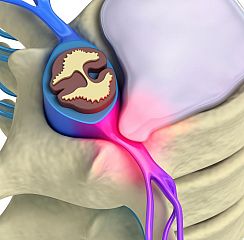About Us
Chiropractic is a primary healthcare profession that specialises in the diagnosis, treatment and management of conditions that affect the bones, muscles and nerves. The term Chiropractic is derived from Greek and means "treatment by hand". Chiropractic is globally recognised, regulated and is the third largest primary healthcare in the world, behind medicine and dentistry.
In the UK to use the title chiropractor, practitioners must have completed 4-6 years of extensive training, hold a chiropractic BSC, Msc, MChiro degree and be registered with the General Chiropractic Council (GCC). All practitioners are required to adhere to the GCC code of practice, standard of proficiency and maintain the required level of continued professional development.
How it works
Treatment comprises of highly skilled and specific adjustment of the spine, cranium, joints and muscles. These procedures are typically accompanied with soft tissue muscle treatment, joint mobilisation, lifestyle advice and rehabilitative exercises.
Chiropractic adjustments have a profound effect on the bodies central nervous system. The central nervous system controls every muscle, bone, organ and cell in the body. Your central nervous system is protected by your spine and cranium, so naturally chiropractors typically focus on these areas during a treatment.
By correcting poor functioning spinal joints, cranial bones, pelvic joints, upper / lower limb joints, muscles, movement and postural patterns, chiropractic can help reduce pain, improve bodily function and overall wellbeing.
Benefits of Chiropractic
A lot of people share the misunderstanding that chiropractors only provide treatment for back pain. The reality is chiropractors can carry out treatment for a wide range of muscular and skeletal conditions for all ages:
Chiropractic areas of treatment include:
- Back Pain
- Sciatica
- Mechanical Neck Pain
- Shoulder Complaints
- Tennis Elbow
- Hip & Knee Osteoarthritis
- Planter Fasciitis
- Migraine Prevention & Neck Related Headaches
- Minor Sports Injuries
- & Much More……
With chiropractic care people often report feeling:
- They are pain free
- They have more energy
- They feel younger and more flexible
- They can do more
- They can now exercise or go back to hobbies they haven't done for years
- They can achieve more at work
- Their relationships improve as they are in less pain
- Have more fun in their lives
Research
There are hundreds of scientific papers providing good evidence to indicate that chiropractic care is safe and effective. Here are just a few examples.
Lewis RA et al (2015) Comparative clinical effectiveness of management strategies for sciatica: systematic review and network meta-analyses. The Spine Journal 15, 1461–1477. Effective treatment for Sciatica
This research identifies spinal manipulation as appropriate for nerve pain such as sciatica. Click here
UK BEAM Trial Team (2004) United Kingdom back pain exercise and manipulation (UK BEAM) randomised trial: effectiveness of physical treatments for back pain in primary care. BMJ 329:1377
This MRC-funded study estimated the effect of adding exercise classes,spinal manipulation delivered in NHS or private premises, or manipulation followed by exercise to “best care” in general practice for patients consulting with back pain. Click here
Low back pain: early management of persistent non-specific low back pain. NICE guidelines 2009
NICE (National Institute of Clinical Excellence) guidelines on the acute management of patients with chronic low back pain was published in May 2009. Click here
The evidence-based recommendations included:
- Provide people with advice and information to promote self-management of their low back pain.
- Consider offering a course of manual therapy including spinal manipulation of up to 9 sessions over up to 12 weeks.
- Consider offering a structured exercise programme tailored to the individual.
Effectiveness of Manual Therapies – The UK Evidence Report
This review, by Bronfort et al, was published in the journal Chiropractic & Osteopathy in 2010. Commentaries by Professor Scott Haldeman and Professor Martin Underwood accompany the report. In summary, the report demonstrates robust randomised controlled trial (RCT) evidence that the care offered by chiropractors is effective for a wide range of conditions including back pain, neck pain, pain associated with hip and knee osteoarthritis and some types of headache. Click here

"After going backwards and forwards to knee specialists with no luck, I was recommended to St Ives chiropractic clinic. Since then I've never looked back, knee ache is a thing of the past!"
Alisha T, St Ives


